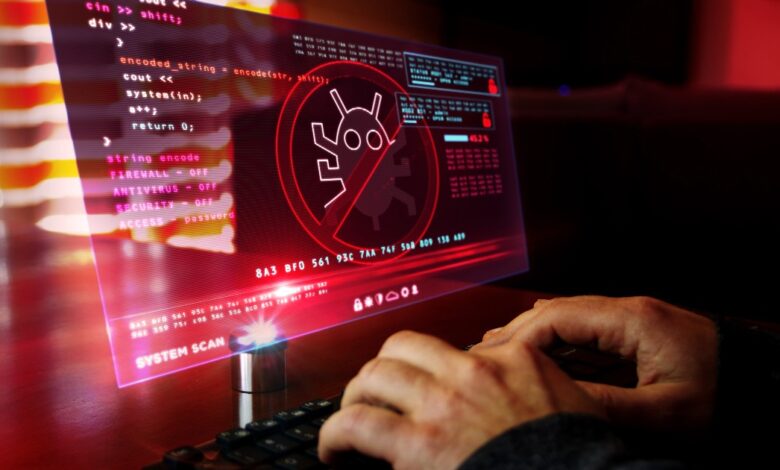Self-replicating Morris II worm targets AI email assistants

The proliferation of generative artificial intelligence (GenAI) email assistants such as OpenAI’s GPT-3 and Google’s Smart Compose has revolutionized communication workflows. Unfortunately, it has also introduced novel attack vectors for cyber criminals.
Leveraging recent advancements in AI and natural language processing, malicious actors can exploit vulnerabilities in GenAI systems to orchestrate sophisticated cyberattacks with far-reaching consequences. Recent studies have uncovered the insidious capabilities of self-replicating malware, exemplified by the “Morris II” strain created by researchers.
How the Morris II malware strain works
Building upon the legacy of the infamous Morris worm, this modern variant employs advanced techniques to compromise GenAI email assistants without requiring user interaction. For instance, researchers have demonstrated how crafted email content can deceive AI assistants into executing malicious commands, leading to data exfiltration, email account hijacking and automated malware propagation across interconnected systems.
The exploitation of GenAI email assistants typically involves manipulating the natural language processing capabilities to bypass security measures and execute unauthorized actions. In a recent incident, researchers showcased how a carefully crafted email containing innocuous-sounding prompts could trigger an AI assistant to execute malicious commands, resulting in unauthorized access to sensitive data and dissemination of malware-laden emails to unsuspecting recipients.
Read the Threat Intelligence Index report
Technical analysis of Morris II malware
Morris II is designed to exploit GenAI components through the use of adversarial self-replicating prompts. Here’s an overview of its techniques and attack vectors:
Adversarial self-replicating prompts
Morris II leverages specially crafted inputs called adversarial self-replicating prompts. These prompts are designed to manipulate GenAI models into replicating the input as output.
When processed by GenAI models, these prompts trigger the model to autonomously generate content that mirrors the input itself. This replication behavior is a crucial part of the worm’s strategy.
Exploiting connectivity within GenAI ecosystems
GenAI ecosystems consist of interconnected agents powered by GenAI services. These semi-/fully autonomous applications communicate with each other.
Morris II exploits this connectivity by compelling the infected agent to propagate the adversarial prompts to new agents within the ecosystem. The worm spreads like wildfire, infiltrating multiple agents and potentially affecting the entire GenAI ecosystem.
Spamming and malicious payloads
Morris II can flood GenAI-powered email assistants with spam messages, disrupting communication channels. By crafting prompts that extract personal data, the worm can compromise user privacy and exfiltrate data. The adversarial prompts serve as payloads. They can be tailored for various malicious activities.
The worm’s ability to autonomously generate content allows it to execute these payloads without human intervention.
Testing against GenAI models
Morris II has been tested against three different GenAI models:
- Gemini Pro
- ChatGPT 4.0
- LLaVA
The study evaluated factors such as propagation rate, replication behavior and overall malicious activity.
Mitigation strategies and future directions
To mitigate the risks posed by self-replicating malware targeting GenAI email assistants, a multi-faceted approach is required. This includes implementing robust security measures such as content filtering, anomaly detection and user authentication to thwart malicious activities. Additionally, ongoing research and development efforts are necessary to enhance the resilience of GenAI systems against evolving cyber threats, such as the integration of adversarial training techniques to bolster AI defenses against manipulation attempts.
Overcoming the threat of self-replicating malware targeting GenAI email assistants requires a multi-layered approach that combines technical solutions, user education and proactive cybersecurity measures.
Here are several strategies to mitigate this threat:
Enhanced security protocols
Implement robust security protocols within GenAI email assistants to detect and prevent malicious activities. This includes incorporating advanced anomaly detection algorithms, content filtering mechanisms and user authentication protocols to identify and block suspicious commands and email content.
Regular software updates
Ensure that GenAI email assistants are regularly updated with the latest security patches and fixes to address known vulnerabilities and exploits. Promptly apply software updates provided by the vendors to mitigate the risk of exploitation by self-replicating malware.
Behavioral analysis
Deploy behavioral analysis techniques to monitor the interactions between users and GenAI email assistants in real time. By analyzing user input patterns and identifying deviations from normal behavior, organizations can detect and mitigate potential security threats, including attempts by malware to manipulate AI assistants.
User education and training
Educate users about the risks associated with interacting with email content and prompts generated by GenAI assistants. Provide training sessions to teach users how to recognize and avoid suspicious emails, attachments and commands that may indicate malware activity. Encourage users to report any unusual behavior or security incidents promptly.
Multi-factor authentication (MFA)
Implement multi-factor authentication mechanisms to add an extra layer of security to GenAI email assistants. Require users to authenticate their identity using multiple factors such as passwords, biometrics or hardware tokens before accessing sensitive functionalities or executing commands within the AI system.
Isolation and segmentation
Isolate GenAI email assistants from critical systems and networks to limit the potential impact of malware infections. Segment the network architecture to prevent lateral movement of malware between different components and restrict access privileges of AI systems to minimize the attack surface.
Collaborative defense
Foster collaboration and information sharing among cybersecurity professionals, industry partners and academic institutions to collectively identify, analyze and mitigate emerging threats targeting GenAI email assistants. Participate in threat intelligence sharing programs and forums to stay informed about the latest developments and best practices in cybersecurity.
Continuous monitoring and incident response
Implement continuous monitoring and incident response capabilities to detect, contain and mitigate security incidents in real-time. Establish a robust incident response plan that outlines the procedures for responding to malware outbreaks, including isolating infected systems, restoring backups and conducting forensic investigations to identify the root cause of the attack.
By adopting a proactive and comprehensive approach to cybersecurity, organizations can effectively mitigate the risks posed by self-replicating malware targeting GenAI email assistants and enhance their resilience against evolving cyber threats.
Self-replicating malware threats looking forward
Morris II represents a significant advancement in cyberattacks. The emergence of self-replicating malware targeting GenAI email assistants underscores the need for proactive cybersecurity measures and ongoing research to safeguard against evolving cyber threats. By leveraging insights from recent studies and real-world examples, organizations can better understand the intricacies of AI vulnerabilities and implement effective strategies to protect against malicious exploitation.
As AI continues to permeate various facets of our digital lives, we must remain vigilant and proactive in fortifying our defenses against emerging cyber threats.



